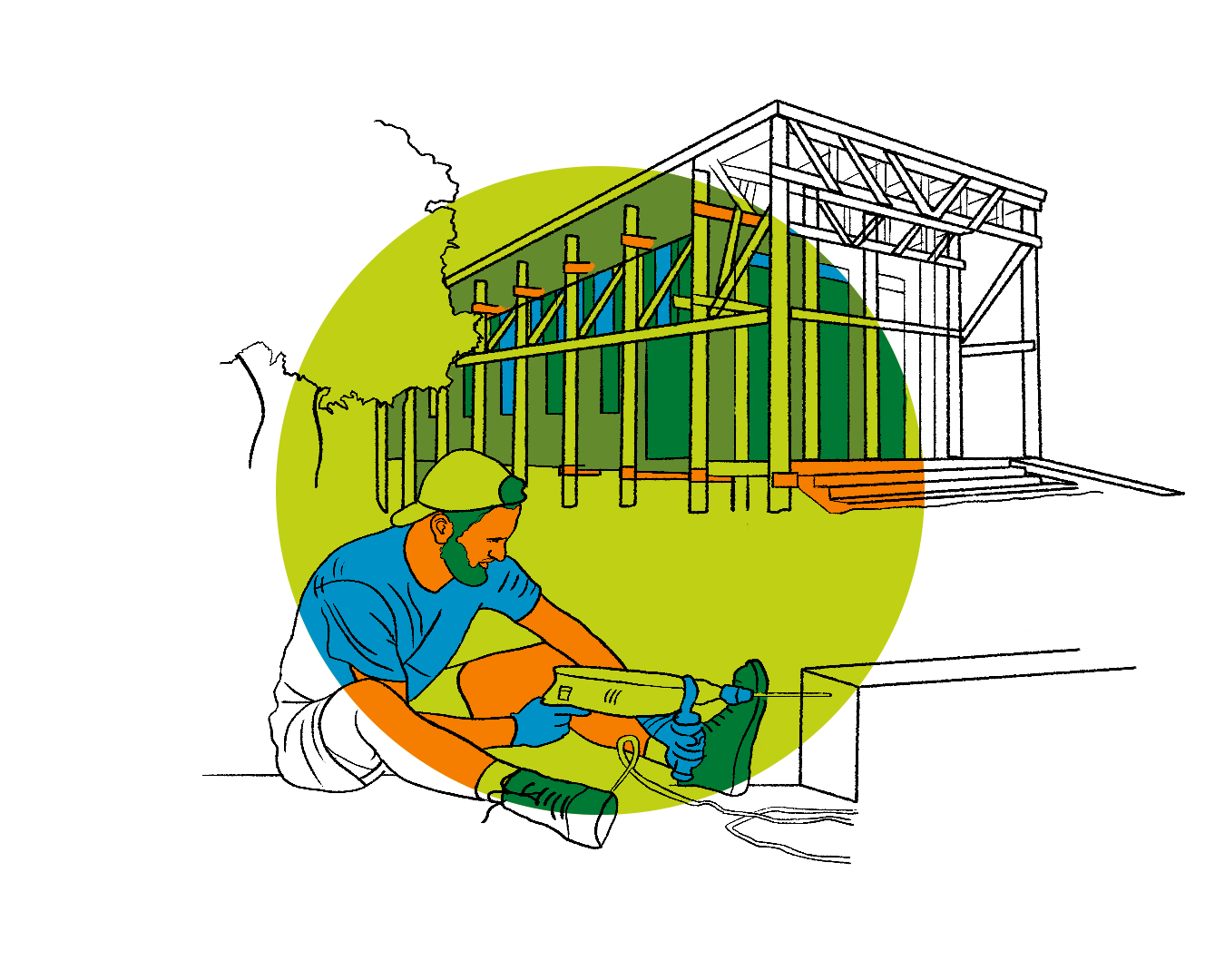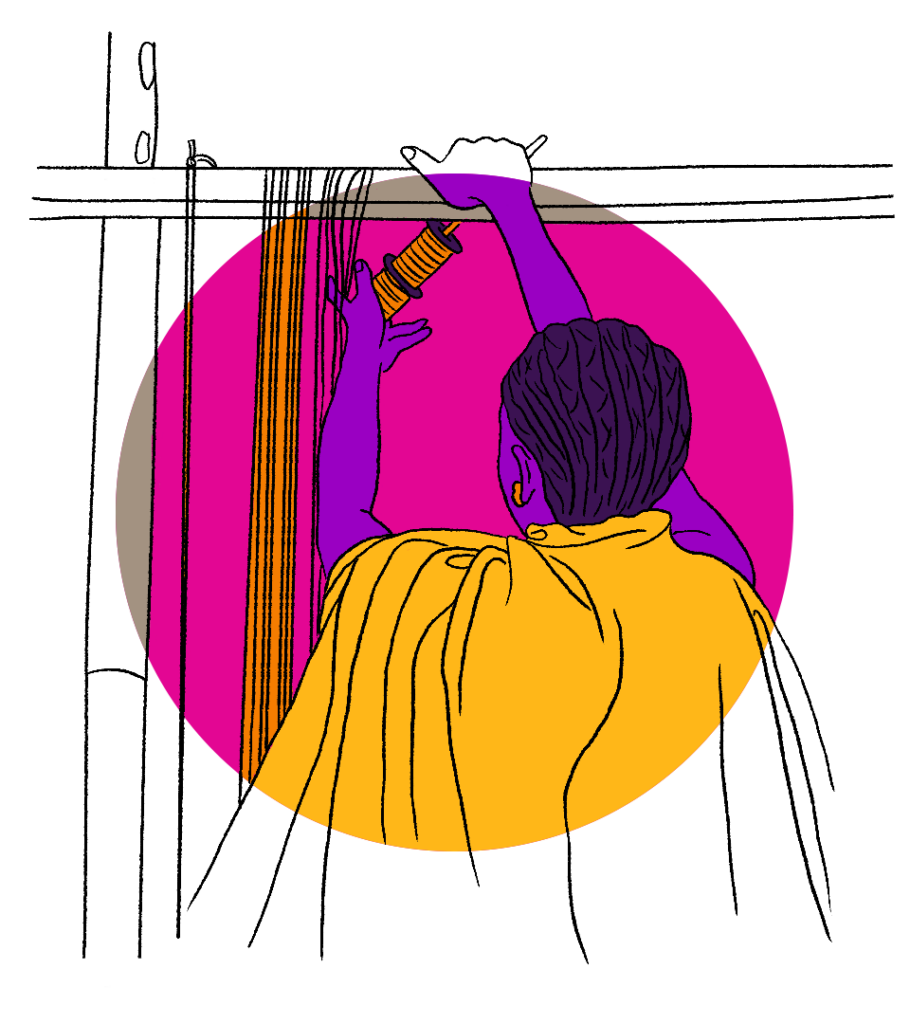A project conceived by university friends in search of meaning became a collaborative global architecture and education provider delivering three-pronged impact.
When founding an impact-driven practice, it’s crucial to maintain a near-perfect equilibrium across the three-way scales of people, planet and profit. CAUKIN Studio was built on the premise that architecture and construction can, and must, prioritise environmental sustainability, social inclusion and economic development, engaging with, and actively seeking out, partners or projects that act as vehicles to create impact through architecture.
From its inception, CAUKIN Studio was an idea, and then a company, born of these three elements. As second year university students, the founders had an acute recognition of the many needs, across the world, that could benefit from innovative design solutions. As a group, there was a shared ambition to complete meaningful projects and a collective feeling that this ambition wasn’t being addressed within formal education. All that was required now was the opportunity. This was something that had to be created.
As a collective, CAUKIN Studio began to explore what a project could be beyond the systematic procurement, delivery and connection of different materials to form a space. Who could learn from the project process? What could it teach them that would improve their lives? How could a project bring people together, and how or what could it help?
From the outset, innovative thinking and the ability to be reactive and nimble were key to the studio’s survival. Through the first three playspace projects, we explored different funding methods, including crowdfunding and donor-based strategies, before settling on a frugal path of bootstrapping the business. It was these early years of scarcity and need that led to creative thinking and business innovation. This mindset continues to be central to the business model today, organically iterated over six years of projects – from a group of friends with a shared interest, to early adopter paying participants, to international recognition as a course provider for students everywhere.

Photo credit: CAUKIN Studio
Each international development project is funded through a quasi joint venture approach that simultaneously benefits the various stakeholders and balances our company scales of people, planet and place. Charitable or NGO partners pay a reduced-rate design fee for the professional delivery of the project, while students from all over the world pay individual fees to participate in a practical educational course, using the project as a live vehicle for learning. This joint financial commitment to the project breeds ownership and creates huge added value: the charity gets a project of much greater quality for a cost it can afford and the students get a unique, career-enriching experience.
Removing titles and positions in favour of roles and responsibilities creates a collaborative team atmosphere conducive to creative innovation
Harnessing the team’s early ambition as fuel to learn through doing, while also recognising our limitations and learning from those with experience, has led to the completion of over 28 projects, across 12 different countries. These projects have engaged over 6,000 end users and, through the process of onsite education, upskilled around 560 local beneficiaries and international participants. As well as generating over £160,000 of investment into built infrastructure and local economies, the projects have truly achieved the three-way balance of impact that we look for. Annual impact reports, pooling information from all of our stakeholders and incorporating both quantitative and qualitative targets, aid the monitoring of company-wide impact and areas of progression.
As we explored different methods of practice, a clear recognition of the actors crucial to a project’s success naturally formed a stakeholder-driven project structure. Our stakeholder model involves a ring of different actors with the shared project sitting in the centre. Each stakeholder gives their own value to the project in the form of time, financial resources, knowledge or professional expertise, while benefiting from the process as a result.

Photo credit: CAUKIN Studio
Operating design and build projects through open and honest communication is a distinct departure from the traditional hierarchical tree. Removing titles and positions in favour of roles and responsibilities creates a collaborative team atmosphere conducive to creative innovation and meaningful, long-lasting impact on a multitude of levels.
In this democratic environment, the question of responsibility in terms of impact is a fairly straightforward one. The responsibility for the project’s social, environmental and economic impact falls at the feet of all stakeholders. Of course this is the theory; in reality, the project sits in the centre, so is pushed and pulled in all different directions. Our role and agency as architectural designers therefore naturally shifts from dictation to facilitation – acting as a conductor of sorts by bringing in stakeholders and their incorporated value, making sure all can be heard and understood, and ensuring the project remains true to its impactful intentions.
One particular example of this process is the Bula Batiki Virgin Coconut Oil (VCO) processing plant, constructed on the tiny island of Batiki in Fiji. With a team of 30 international participants working alongside the community cooperative, on one of the most remote sites we have worked on to date, this 2019 project posed immense logistical challenges alongside the anticipated social and environmental ones.

Photo credit: CAUKIN Studio
Stakeholders for the project included two local government ministries, the cooperative’s board, local village members, international participants and pro-bono engineers, meaning there were plenty of voices to be balanced. This project provided a great lesson in managing unexpected issues and collectively turning them into opportunities. Issues including infrequent and unreliable logistics, miscommunications of product specifications, and manual construction strategies due to the lack of infrastructure became opportunities to collaborate, learn and create together. They led us to learn new skills such as constructing a traditional Fijian Bure out of forest timber (a dying skill only known by village elders), hand mixing concrete as a team and re-roofing a whole village house when incorrect roofing iron arrived. All examples of impact-driven innovation, made possible by nimble practice, project balance and the openness of stakeholders.

Photo credit: CAUKIN Studio
As a company we have seen our evolving strategy of three-pronged impact generation through the built process more than 28 times worldwide. The model has rapidly progressed over the past five years with every project undertaken. Working on more projects in developed contexts, from mental health awareness installations in central London to inclusivity workshops with primary schools in south Wales, we are beginning to witness the important transference of many of these ideas.
We believe that impact can be created in any and all architectural projects, be that through educating and upskilling 50 more young men and women, slashing the carbon emissions of our projects or increasing accessibility through our delivery methods. We are driven, regardless of budget or brief, to unite stakeholders in the interrogation of design and build projects, beyond the final built product. Once we can do this universally, we can start to deliver on impact in any context.








